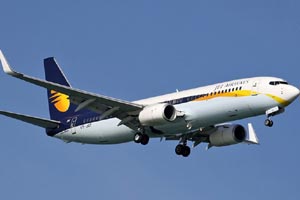Mumbai’s Santa Cruz terminal, which currently hosts most of the domestic flights, will cater only to low-cost carriers such as Indigo, SpiceJet and GoAir once full-service carriers like Jet Airways and national carrier Air India shift domestic operations to terminal 2 (T2) by December.
“Both Jet Airways and Air India, which operate out of terminal 1B, will shift domestic operations to T2 by the end of the current calendar year,” a senior GVK official, who didn’t wish to be named, said.
Mumbai International Airport Pvt (MIAL), which operates Chhatrapati Shivaji International Airport (CSIA), is a joint venture between a GVK-led consortium holding 74% stake and Airports Authority of India (AAI) holding the rest.
At present, full service carriers like Jet Airways and Air India, along with no-frills carriers like IndiGo, SpiceJet, and GoAir, operate from terminal 1B of the Mumbai airport, while the newly launched full service carrier Vistara, a joint venture between Tata Sons and Singapore Airlines, operates out of T2.
T2 also caters to international operations of existing Indian airlines and other foreign airlines, apart from certain domestic legs of international flights operated by Air India.
An AAI official told FE the decision to shift full service carriers to T2 was prompted by the need to ease traffic congestion at terminal 1B. “The plan is to make terminal 1B available only for low-cost carriers. Air India and Jet Airways were to shift to T2 by June-July 2015. Now both airlines will shift domestic operations only by the end of the year,” the official said.
Industry experts say that while devoting an entire terminal to no-frills airlines will save passenger time, it may not help them save on user development fee, which is uniform across domestic airlines. “The landing, parking and housing charges for aircraft are also not different for the two models,” said an analyst tracking the sector for a international consultancy firm, who didn’t wish to be named.
Going ahead, airport charges may not be differentiated immediately at Mumbai’s terminal 1B and 2, said Manish Agarwal, leader, Capital Projects & Infrastructure, at PwC India. “However, the airport authorities could propose to the regulator to differentiate in cost and traffic allocation in the future, leading to different airport charges at these terminals.”
At present, Delhi airport’s terminal 1D caters exclusively to low-cost domestic carriers. Mumbai’s T2 caters to about 750 inbound and outgoing flights daily, comprising about 500 domestic, 200 international and 50 cargo flights.

